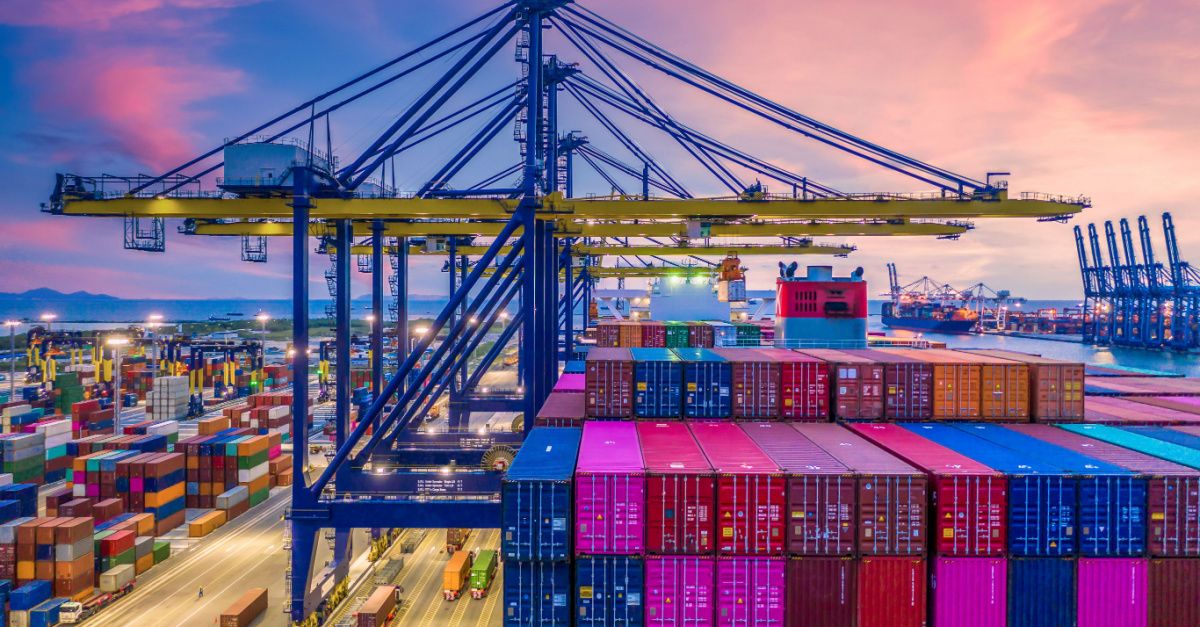
Building Sustainability Resilience in Ocean Freight Procurement: Reducing Risk and Emissions through Technology and Expertise
With the increasing recognition that environmental, social, and governance (ESG) factors can impact a company’s long-term success and reputation, sustainability risk management (SRM) is a rapidly growing topic. For companies with global supply chains, informed ocean freight procurement plays a critical role in achieving their sustainability goals. By having a solid framework for approaching sustainability and SRM, companies can ensure every freight procurement decision sets them up for success.
Understanding Sustainability Risk Management
Sustainability risk is the potential negative impact of a company’s activities, operations, or practices on ESG factors. Sustainability risk management is about trying to minimize this risk within business operations. The goal of SRM is to ensure that organizations act in a responsible and sustainable way.
With different tools and platforms, companies can manage data collection, analysis, and monitoring of sustainability-related data, like carbon emissions from transportation and logistics, enabling them to understand their sustainability performance and identify potential risks more accurately. For the growing number of companies impacted by global regulations and standards for sustainability, SRM also serves as a means to navigate this complex regulatory landscape and contribute to global sustainability efforts.
The Role of Risk Management in Sustainability
Before SRM, risk management focused primarily on mitigating financial risks and protecting assets. However, the scope of risk management has since expanded to encompass a broader range of risks, including operational, regulatory, and environmental risks. Companies today must unite SRM with enterprise risk management (ERM), aligning their sustainability initiatives with their overall business strategy. With a holistic approach that recognizes the interdependencies between a range of risk factors, businesses can improve their long-term sustainability performance while effectively managing risk.
Environmental, Social, and Governance Factors
As sustainability risk management grows, companies are putting more focus on ESG factors within their corporate strategies and values. More investors are calling for transparency and accountability, including comprehensive reporting on ESG performance, identification, and management of risks and opportunities.
Sustainable Development Goals (SDGs) can help guide businesses in their pursuits as a framework for contributing to social and environmental progress. By aligning with SDGs, companies can improve their reputation, attract investors, and unlock business opportunities. 17 SDGs have been defined by the United Nations:
1. No poverty
2. Zero hunger
3. Good health and well-being
4. Quality education
5. Gender equality
6. Clean water and sanitation
7. Affordable and clean energy
8. Decent work and economic growth
9. Industry, innovation, and infrastructure
10. Reduced inequalities
11. Sustainable cities and communities
12. Responsible consumption and production
13. Climate action
14. Life below water
15. Life on land
16. Peace, justice, and strong institutions
17. Partnerships for the goals
The Deloitte Sustainability Risk Management Framework and Implementation
Professional services firm Deloitte has created a Sustainability Risk Management Framework designed to guide organizations’ risk management and decision-making processes. It considers the organizations’ corporate strategy as the foundation for decisions and the 17 SDGs as value chain drivers. Organizations must consider every aspect of their risk exposure and response design and how these relate to outcomes and performance.
Implementing sustainability risk management involves a repeating six-step process, leading organizations to more effectively integrate sustainability into their operations, mitigate risks, and drive positive outcomes for their stakeholders. Deloitte defines these steps as commit, assess, define, implement, measure, and communicate.
- Commit – Leadership must commit to taking strategic action toward better sustainability, with transparency.
- Assess – Identify and evaluate risks, opportunities, and impacts for all areas of concern.
- Define – Establish clear goals, strategies, and policies based on the assessment findings to serve as a roadmap for guiding sustainability efforts.
- Implement – Put the defined strategies and policies into action throughout the company and its value chain.
- Measure – Measure and monitor the impacts of sustainability initiatives to assess the effectiveness of implemented strategies.
- Communicate – Communicate progress and strategies to encourage transparency, accountability, and continuous improvement.
The Role of Searoutes in Enhancing Sustainability Risk Management
Aligning with this six-step framework, Searoutes’ recommended approach to sustainability is, simply stated, 1) Report, 2) Route, and 3) Reduce. The first step is to ensure using an accurate reporting methodology.
The initial step is to establish a precise reporting methodology by leveraging cutting-edge technology through APIs. This fundamental hurdle to data-driven action is when firms err by depending solely on averages and generic data. Searoutes employs proprietary algorithms to provide companies with reliable and precise data, establishing a robust baseline to measure and monitor transportation emissions. This is vital for well-informed ocean freight procurement decisions, a part of step 2: Route.
Within the Route step, we’re not just talking about generic data. This means access to carbon emissions data, derived through heatmap analysis, that illuminates the root cause of transportation emissions according to specific port pairs, equipment types, and exact shipping lanes. The result is visibility and profound insights into CO2 reduction potential per location and mode of transport.
Lastly, for step 3: Reduce emissions, it’s not just about repetitive action. Here, the focus shifts towards activating less pollutant routes and carriers through sustainable procurement processes. This step allows companies to continually build sustainability resilience, reduce risk, and make a genuine, quantifiable impact on their environmental footprint.
Reduce Freight Carbon Emissions with Searoutes
Companies can pave the way for better sustainability within their operations and value chain by implementing a solid sustainability framework and risk management. Searoutes helps companies reduce risk through data-driven ocean freight procurement and sustainable routing options that increase their business’s resilience. To learn more about reducing carbon emissions through Searoutes, reach out to us today to book a demo.